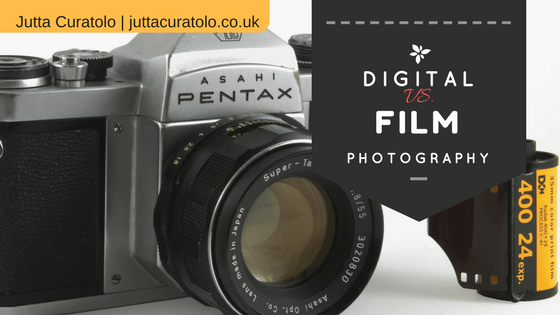Digital photography has definitely taken over the current market of cameras but photographers may still choose to work with film. The debate between whether film or digital is the better medium to use when taking photos is up to the person behind the camera. You may find yourself wondering, why does it matter?
The Debate
The biggest issue between film and digital is the quality between the two. Film photography has an organic, grittier feel for the image than the hyper-pixeled, clear image that digital can create. There are many arguments surrounding the technicality of film and digital. The resolution, grain, and even the general cleanliness of the image are all major factors of the conflict between the two.
Digital images can also be easily manipulated in post-production programs such as Adobe’s Photoshop. Many photographers believe that digital photography has the potential to be dishonest to the viewer. Film photography can truly show the honest talent and eye of the photographer. Yet, many photographer’s works can blur into graphic art which is a bit more inviting to the idea of manipulating photos.
Another argument between digital and film photography is that film can also be manipulated and edited, but just not as well as digital. Early forms of photo manipulation can be traced back to as early as the mid-1800s.
Which is Better?
There will never be a clear answer as to which medium of photography is “better.” Some photographers prefer the grain and dust on film images while others enjoy the crisp and edited images that digital cameras can create. Whether you shoot strictly film or digital, there is no reason to be judgmental on which one you would rather utilize as a photographer. The pros and cons will always be equal so it truly comes down to preference as an artist.
Popularity
Even with high-resolution cameras still at the forefront of popularity, considering they are in every smartphone, film still has a strong corner of the market. The instant film camera company, Polaroid, has released their classic film camera which has sparked popularity in the younger market because of its nostalgic tone of grain. Taste is subjective to the person behind the camera to the person viewing the image.

